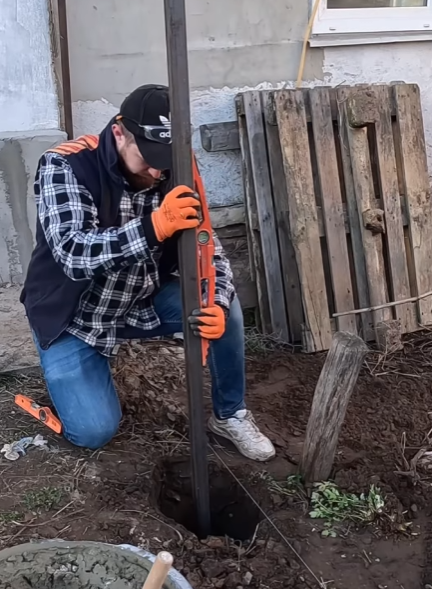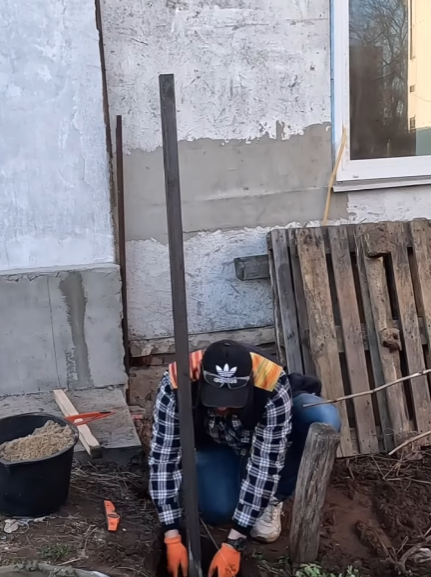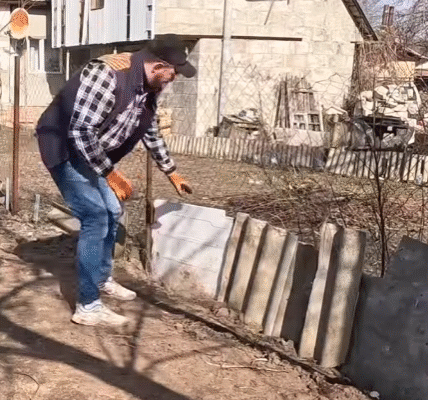
For centuries, humanity has built fences to protect, define, and preserve. Whether to mark property boundaries, secure livestock, or create privacy, the need for strong, lasting barriers has remained constant throughout history. And even as building materials and techniques have evolved, one approach has stood the test of time for its practicality and durability: concreting fence posts and using corrugated sheet metal as fencing material.
In the modern age, the combination of concrete and corrugated sheet metal has become a popular and dependable fencing solution. But this method is not just a recent trend—it reflects generations of construction wisdom. Let’s explore why this method is still so widely used, what makes it so effective, and how you can build one yourself.
A Legacy of Strong Foundations
Throughout history, civilizations recognized the importance of securing vertical posts with stable foundations. In ancient times, wooden or stone posts were often buried deep in the ground or set in dry gravel. As materials science advanced, concrete became the standard for providing a strong, immovable base.
Concrete provides two critical elements for fence posts: stability and longevity. A post set directly in soil is vulnerable to shifting, moisture, rot, and wind. But once that post is surrounded by cured concrete, it becomes part of a larger foundation, able to resist pressure from all sides and stand firm against time and weather.
That’s why the first step to building a proper corrugated metal fence is making sure your posts are properly secured. Typically, steel or wooden posts are buried at least 2 to 3 feet into the ground, then concreted in. This is crucial not just for straightness and strength, but also for load-bearing ability—especially in regions with strong winds.

Why Corrugated Sheet Metal?
Corrugated sheet metal has been a favorite construction material for over a hundred years. Originally developed in the 19th century, it became widely popular due to its strength-to-weight ratio and resistance to corrosion. The rippled, wave-like pattern—known as “corrugation”—isn’t just for looks. It significantly increases the metal’s bending strength, making it tougher and more flexible than flat sheet metal.
Here’s why corrugated sheet metal is such a great fencing material:
- Durability: Galvanized or coated metal resists rust, rot, and insects. It can last decades with minimal maintenance.
- Security: It’s not easily climbable, hard to cut through without tools, and offers no handholds.
- Privacy: Solid metal panels offer complete visual blocking from neighbors or passersby.
- Wind resistance: The metal panels, especially when securely fastened to concreted posts, can withstand high winds better than wooden slats or chain link.
- Cost-effective: While initial costs can be higher than wood, the long-term savings from low maintenance make it a smart investment.
Planning Your Fence
Before setting the first post, careful planning is essential. Measure your boundary and mark where each post will go—typically every 6 to 8 feet. Consider your local climate, soil type, and whether you’ll need gates or other access points. Think also about the height: most residential fences range between 5 to 8 feet tall.
Then comes choosing materials:
- Posts: Metal (steel or aluminum) or treated wood posts work best. Steel posts are preferred for durability.
- Concrete: Ready-mix bags work well. One 60-lb bag typically fills one 8″ diameter hole 2 feet deep.
- Corrugated panels: Available in steel, aluminum, or even recycled materials. Choose a rust-resistant option with UV-resistant coatings if possible.
- Screws or bolts: Use metal roofing screws with rubber washers to avoid leaks or rattling.
- Tools: You’ll need a post hole digger, level, shovel, drill, wrench, measuring tape, and string line.

Step-by-Step: Building a Corrugated Metal Fence
- Mark the Line
Stretch a taut string between the start and end points of your fence. This helps keep the line straight and aligned. - Dig the Post Holes
Use a post hole digger to create holes at each marked spot. Dig at least 24-36 inches deep and 8-10 inches wide. The deeper the hole, the more stable the post. - Set the Posts
Place the post into the hole and pour in quick-set concrete. Make sure each post is perfectly vertical using a level. Let the concrete cure for at least 24-48 hours. - Install Top and Bottom Rails (if needed)
For extra support, horizontal rails can be attached between posts to which panels will be screwed. - Attach the Corrugated Metal Panels
Starting at one end, line up your first panel. Drill screws into the raised ridges of the panel into the post or rail. Overlap each panel slightly to avoid gaps. - Finish the Edges and Top
Use trim pieces or cap strips for a cleaner look and to prevent injuries from sharp edges. - Inspect and Reinforce
Walk the length of the fence, check alignment, ensure every panel is tight, and secure any loose screws or connections.
Maintenance and Lifespan
One of the greatest benefits of a concreted-post, corrugated metal fence is how little maintenance it requires. That said, a few periodic checks can extend its life:
- Clean panels once or twice a year with water to prevent dirt buildup.
- Touch up any scratched paint or coating to prevent rust.
- Check for loosening screws after storms or strong winds.
- Trim vegetation growing too close to avoid scratching or moisture buildup.
With proper care, such fences can last 20–40 years or more.

Beyond Function: Aesthetic and Style
Fencing doesn’t have to be purely utilitarian. Corrugated metal offers design flexibility, too. Panels are available in multiple colors and finishes—from industrial gray to wood-look coatings or bold modern hues. Mix it with wood or stone posts for a custom, stylish blend. Add vertical gardens, vines, or LED lights to soften the look or add character.
Conclusion: The Legacy Continues
From the stone fences of the ancient world to the modern blend of concrete and metal, the quest for strength and permanence in fencing never fades. Concreting the posts and using corrugated sheet metal isn’t just a practical method—it’s a proven system shaped by centuries of trial and error.
Whether you’re building a backyard fence, securing a homestead, or enclosing a commercial site, this technique offers a long-lasting solution that’s both cost-efficient and timeless. The technology may be modern, but the principles behind it are age-old: build solid, build smart, and build to last.



